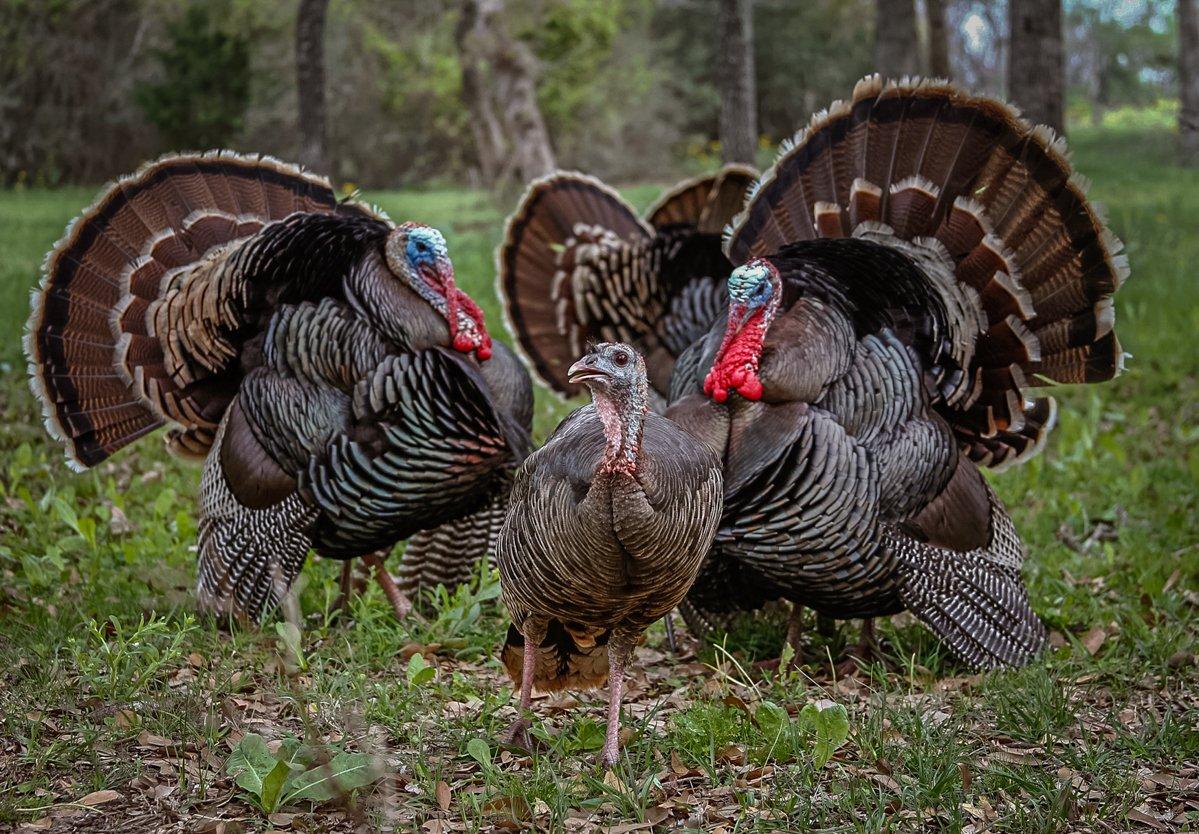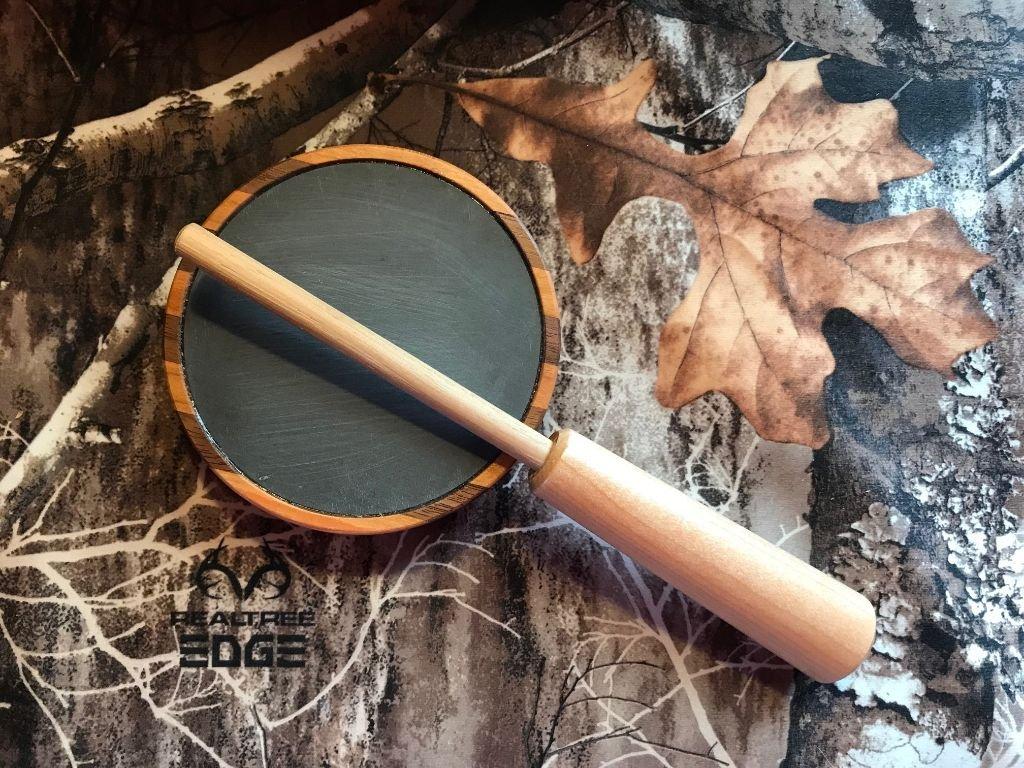Sometimes the best way to kill a henned-up tom is to talk to the hen herself
You try to play fair. You float some soft, sweet yelps hoping to pull that gobbler to you, right off the roost. He flies down, gets fired up, and then the boss hen strides in out of nowhere and intercepts your bearded bird of future bragging rights. Roosted ain't roasted, and all that.
Some springtime longbeards just take their marching orders from the boss hen. The best — and sometimes only — way to get them in range is to call to her. It's a dirty trick, when you fire her up and she comes to your setup with the gobbler lagging behind. But the payback feels good. Her alarm putting after you dump that tom says it all.
So how do you make a case to the lady turkey in charge that she should come in, and bring that dawdling strutter with her? You have to think like a turkey. Actually, you have to think like two turkeys: the boss hen and the gobbler running with her.
Get in Their Heads
That gobbler wants to breed that boss hen. He's biding his time, strutting his stuff, and living life with a mostly single-minded purpose. At times he'll fight off another longbeard trying to get in on his act. That's what those spurs are for after all. At times a jake gang will try to test his dominance. He'll have to address that too. Mostly though, he gobbles on the roost and waits for the brood hen to call back (plus other hens in the flock). They'll fly and/or walk to each other. Mission accomplished, those turkeys will go silent.
That boss hen is complex too. She's established a home ground, with nesting about to begin or having even started. She's aware of other turkeys in the area, and will contest a new hen's presence, even if it's just a vocalization. She needs to eat, sleep in a roost tree, and eventually breed. Breeding occurs as daylight lengthens, and true spring arrives. That's the moment the gobbler is waiting for.
Knowing what that longbeard wants and what makes the boss hen tick is everything.
Make Her Mad
Over the years I've had several buddies tell me stories that went something like this: They called and raised a talkative hen. They started cutting and the hen responded with equal intensity. On arrival, the bird approached their decoy, and stalked it; even pecked at it. Clearly dominance was being asserted.
A different turkey bud recalls the time he returned to his original setup after taking a little walk to check out an adjacent field. He found a live hen beating up on his hen fake. She spooked on his approach, taking wing, but with her beak stuck in the decoy. It tumbled to the earth after a short distance.
Dominance? Heck yeah. Knowing that spring hens sometimes act like this can help you call her to your position, ideally with the gobbler lagging behind her.
Join the Assembly
Morning turkeys assemble by vocalizing from their roost location, and after flying down. Your calling advantage comes during this transition.
You can tree call to softly announce your location, especially if you're out of sight of roosted birds but within hearing range. Hands-free diaphragms put you at an advantage when sitting tight to the roost. Secrecy rules. You can also talk to them once fly down starts. Pull the hens in to your position and the gobbler might follow, hearing your shared vocalizations.
Strike 'Em Hard
Ohio custom callmaker and veteran turkey hunter D. Marlin Watkins has some definite opinions about striking turkeys, especially hens.
"When prospecting I use a snapping yelp, followed by aggressive cutting. When you hear this in response, you know you have the boss hen. My view: I'm just as well to strike her as him." Why the confidence? "As far as odds go in my experience, seven out of 10 times that gobbler is with that boss hen in this situation. If I can do something with her, I can do something with him."
Watkins has some boss hen experience. Once he raises a hen turkey with calling, he keeps on that bird. "Don't quit if she's fired up," he emphasizes. "Stay on her with the calling. Quit, and it's often over. It goes silent and they drift off."
Call Silent Hens
What if birds shut up after fly down? You know they're still out there, but where?
Watkins uses what he calls "soft, walking yelps." Instead of being aggressive with the cutting to get a hen fired up, he'll ease slowly into an area he knows to hold turkeys. Maybe it's the same group he's tried to call before. He'll slip along, and call softly.
"Unless she's cutting me off, I'll go with softer calling. Soft walking yelps; three notes, with soft clucks too, as I move in will sometimes work. You've got to take that turkey's temperature."
Once you do, Watkins suggests, go with the soft stuff or hard cutting, depending. If she stays soft, you might too. If she is cutting hard, you should do the same.
Finish Where You Started
If a flock favors a roost and evening hunts are legal, slip in there mid-afternoon. Take a setup nap. Call occasionally from your position to locate the boss hen and the rest of the flock as they return to that location. Get her interest, and the other birds might follow right in.
One opening spring day in Kentucky, I'd killed a nice gobbler right after fly down, a bird that charged to the calls like a blitzing linebacker does a quarterback as many other turkeys assembled. My buddy wanted a bird too of course, so we went back in there that afternoon.
After some sitting, some listening, and some cold calling, the boss hen responded in the near woods. Softly she called at first, with just clucks and soft yelps. We answered in same. In time, we got her fired up, and the woods echoed with cutting. She appeared first, stalking our calls. Then the whole group of subordinate hens came in flanking her, along with a handful of jakes. All passed by us, a stick's throw away. And then we saw him: a big ol' strutter bringing up the rear.
In he came, mincing steps to catch up with the group. Boom. Down. Game over. "Mine's bigger," my buddy joked.
How to Get Inside a Wild Turkey's Comfort Zone
More Realtree turkey hunting. Follow us on Facebook.










